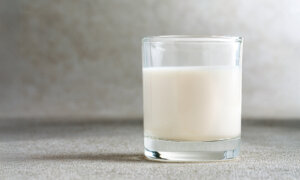- Overweight people: Those with a body mass index (BMI) between 25 and 30 face an increased risk of developing fatty liver disease. If your BMI (calculated as weight divided by height squared) is more than 25, testing for fatty liver disease is recommended.
- “Skinny fat” people: These people often appear slim but have a high body fat percentage, giving them a soft, “puffy” appearance.
- People who enjoy sweets or alcohol: Diets high in sugar or alcohol can also increase the risk of developing fatty liver disease.
Weight Loss and Exercise
For overweight patients with fatty liver, doctors usually recommend weight loss before starting medication. However, there are two key points to keep in mind:- Avoid Extreme Dieting for Weight Loss. Extreme dieting can worsen fatty liver. Rapid weight loss prompts the body to use stored fat, increasing fatty acids in the bloodstream, which can lead to further fat buildup in the liver. It is recommended to aim for no more than 2.2 pounds of weight loss per week.
- Avoid Eliminating Fats During Weight Loss. Eating too little fat can increase the risk of developing gallstones.
In traditional Chinese medicine (TCM), regularly marching in place is often recommended to help burn fat and strengthen leg muscles.
Steps:- Stand naturally with your feet shoulder-width apart and place your hands near your waist.
- Engage your core and thigh muscles to lift your right knee, allowing your hands to rise naturally with the movement.
- Lower your right leg and lift your left knee, alternating legs with each lift.
- Reducing Free Fatty Acids: Exercise improves peripheral insulin resistance, reducing the delivery of free fatty acids and glucose to the liver for synthesis.
- Increasing Fatty Acid Oxidation: Exercise boosts fatty acid oxidation in the liver, helping to break down excess fat.
- Decreasing Fatty Acid Synthesis: Exercise lowers the production of fatty acids within the liver.
- Protecting Against Cellular Damage: Exercise reduces the release of molecules associated with cellular damage, which helps protect liver cells and mitochondria.
Items to Avoid for Liver Health
- Alcohol: Alcohol is particularly harmful to the liver. Often referred to as “liquid bread,” alcohol can lead to rapid fat accumulation in the liver, and excessive drinking can worsen fatty liver disease.
- Sugary Foods and Drinks: Excessive intake of high-fructose items such as candy, desserts, and sweetened beverages can spike blood sugar levels. Excess fructose is stored in the liver, increasing the risk of fatty liver disease. Like alcohol, sugar can be addictive when consumed in large amounts.
- Foods With Artificial Trans Fats: Artificial trans fats or hydrogenated vegetable oils are the most harmful type of fat for cardiovascular health and are widely found in processed foods. Items like fried chicken, cakes, frostings, coffee creamers, butter substitutes, and certain types of peanut butter can harm the liver and heart.
Breaking Unhealthy Eating Habits
Maintaining a balanced eating schedule is crucial, and there are certain unhealthy habits that should be avoided:- Overeating: Eating excessive amounts of food can increase the risk of fatty liver disease.
- Skipping meals: Some people skip lunch and then overeat at dinner. Over time, this habit can lead to fatty liver.
3 Types of Food to Support Liver Health
- Cruciferous Vegetables: Broccoli, radishes, and other cruciferous vegetables contain sulforaphane, which supports liver detoxification.
- Sulfur-Rich Foods: Garlic and onions are high in sulfur compounds that enhance the liver’s detoxification capacity.
- Foods High in Omega-3 Fatty Acids: Avocados and mackerel are excellent sources that help reduce inflammation in the body.
Hawthorn Tea for Liver Fat Reduction

- 0.35 ounces (10 grams) dried hawthorn (about a small handful)
- 1 smoked plum
- 5 rosebuds
- Place the ingredients in 16.91 fluid ounces (500 milliliters) of boiling water and simmer for 10 minutes.
- If short on time, simply add the ingredients to a thermos, pour in hot water, and let steep for 10 minutes before drinking.













